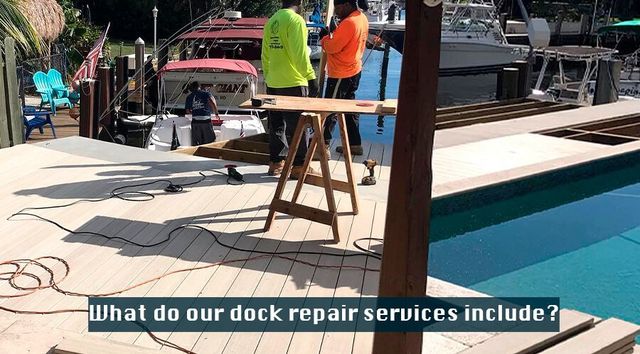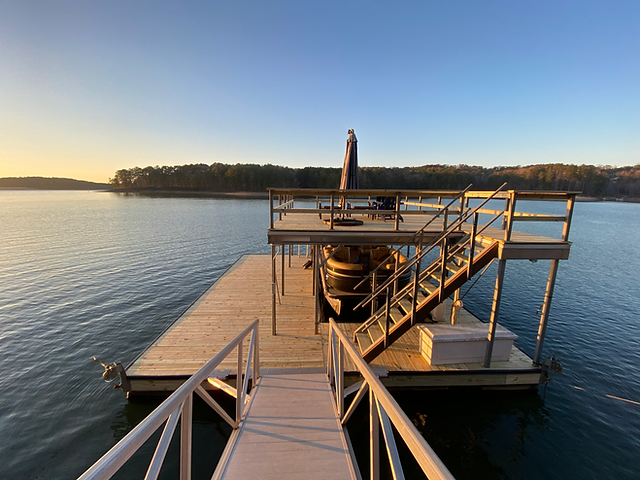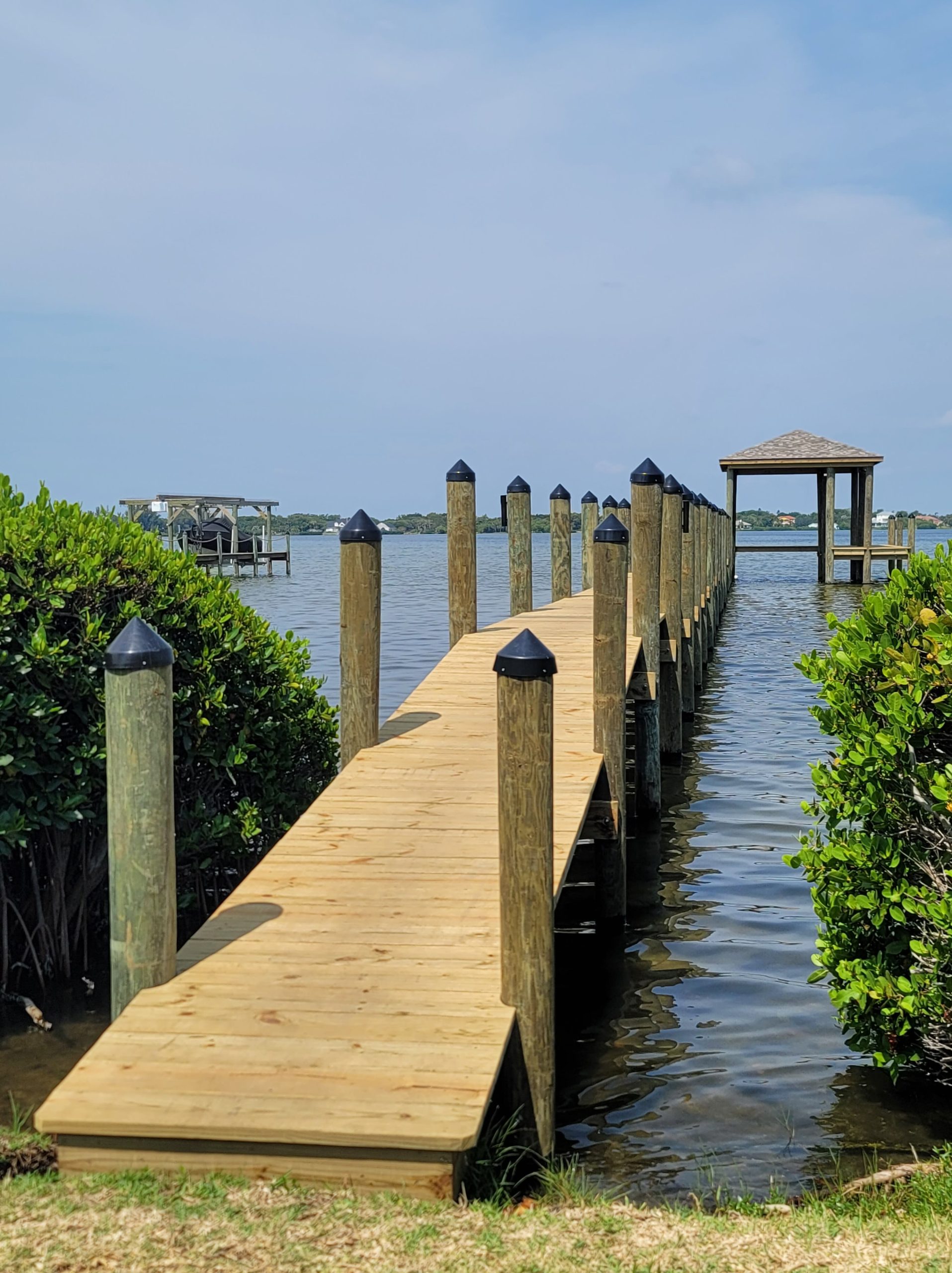Specialist Insights on Resilient Dock Repairs Solutions
Specialist Insights on Resilient Dock Repairs Solutions
Blog Article
Reliable Dock Repair Service Techniques: Making Certain Architectural Integrity
Ensuring the architectural integrity of docks through effective repair work strategies is critical for the long life and security of aquatic facilities. This includes a multi-faceted method starting with detailed inspections utilizing innovative technologies like sonar tools and remotely operated lorries (ROVs) to spot both noticeable and hid damages. Ultimately, selecting the ideal fixing products, such as corrosion-resistant alloys and composite materials, is essential for resilience. Structural reinforcement methods, consisting of the execution of cross-bracing systems and load-distribution plates, play an essential function in mitigating stress and anxiety points. The importance of these methods comes to be apparent when checking out innovative repair work techniques and preventative maintenance methods.
Assessing Dock Damages
Analyzing dock damages is a crucial first step in guaranteeing the architectural honesty and security of any docking center. This preliminary assessment involves an extensive examination to recognize both noticeable and covert damages. Trick aspects to check out include the dock's structure, pilings, decking, and hardware. Each element has to be scrutinized for indications of wear, rot, corrosion, or other kinds of degradation that can compromise the structural integrity.
Architectural designers or certified assessors normally do these analyses utilizing specialized methods and tools. Underwater inspections might use finder devices or from another location operated lorries (ROVs) to detect immersed damage. Above water, aesthetic examinations are matched by utilizing moisture meters and other analysis devices to discover underlying issues not instantly noticeable to the naked eye.

Finding Repair Service Materials
Picking the ideal repair products is an essential step in the dock reconstruction process, one that straight influences the long life and performance of the repaired structure. Product selection have to be driven by elements such as ecological conditions, load-bearing demands, and compatibility with existing dock parts.
Along with timber, composite materials are progressively preferred because of their durability and reduced maintenance needs. Composites, normally made from a mix of plastic and timber fibers, offer exceptional resistance to rot, pests, and UV damage. For steel docks, picking corrosion-resistant alloys such as galvanized steel or marine-grade light weight aluminum is necessary to avoid corrosion and make certain architectural honesty in saline water problems.
Epoxy materials and marine-grade sealers are important for fixing fractures and sealing joints, supplying a waterproof obstacle and boosting the dock's total toughness. By thoroughly choosing top notch products, dock fixings can accomplish resilient results, thereby safeguarding versus future deterioration and making sure safe, dependable usage.
Structural Reinforcement Strategies
Reliable architectural reinforcement techniques are vital in guaranteeing the stability and long life of dock repair services. One fundamental approach involves the usage of steel or composite support bars (rebar) within concrete structures. Rebar provides added tensile toughness, protecting against cracks and distributing lots much more equally. This approach is especially effective for docks revealed to heavy loads or harsh ecological conditions.
Another necessary strategy is the application of fiber-reinforced polymers (FRP) These materials provide high strength-to-weight ratios and outstanding resistance to deterioration, making them ideal for reinforcing concrete or wooden anchors. FRP can be used in sheets or strips and adhered with epoxy materials to enhance structural integrity.
Bracing and anchoring systems additionally play an important function in structural reinforcement. Cross-bracing, using steel or wood light beams, can neutralize lateral forces, decreasing swaying and movement. Securing systems, such as helical piers or driven stacks, provide a stable structure by moving loads to deeper, more stable dirt layers.
Finally, the combination of load-distribution plates can help disperse weight a lot more uniformly across the dock's surface area, reducing local anxiety factors. These methods jointly make sure that docks stay secure and robust, capable of holding up against the rigors of their operational atmosphere.
Advanced Repair Work Approaches

Another sophisticated technique includes undersea welding, which enables repair work to be conducted without the requirement to dewater the location. This approach is particularly beneficial for attending to architectural concerns in immersed dock parts, making certain marginal disturbance to procedures. Boosted welding strategies, paired with robot systems, provide precision and dependability, consequently expanding the lifespan of the dock.
Additionally, cathodic protection systems are executed to prevent deterioration in metal dock frameworks. By making use of sacrificial anodes or impressed current systems, these methods successfully alleviate the electrochemical processes that cause material wear and tear.
Lastly, advanced monitoring innovations, such as structural health surveillance (SHM) systems, supply real-time data on the problem of dock structures. These systems enable aggressive maintenance and prompt treatments, eventually ensuring the lasting structural honesty of the dock.
Upkeep and Prevention
Upkeep and prevention are essential principles that underpin the long life and safety of dock structures. Normal evaluations are paramount, permitting early discovery of wear and tear, prospective weaknesses, and ecological influences. A proactive method, including routine look for deterioration, rot, and structural shifts, reduces expensive repair services and lengthens check my source the dock's functional life.
Preventative steps must include applying safety layers to metal parts to protect against rust and using cured timber to stand up to degeneration. Additionally, making sure correct water drainage and air flow can protect against water buildup, which is an usual root cause of structural deterioration. Incorporating quality imp source products and sticking to maker guidelines during building and construction and repair stages additionally play crucial duties in improving longevity.

Training personnel in dock maintenance ideal techniques makes certain regular application of safety nets. Leveraging technological advancements, such as drones for assessments and sensing units for real-time surveillance, can additionally improve maintenance initiatives. By focusing on maintenance and prevention, dock proprietors can make sure structural honesty, operational safety, and cost-effective monitoring over the dock's life expectancy.
Final Thought
To conclude, preserving the architectural integrity of aquatic facilities requires comprehensive dock fixing techniques. Detailed evaluations making use of advanced tools discover both noticeable and concealed damages, while the choice of ideal repair service materials improves longevity. Executing architectural support methods addresses anxiety factors efficiently. Advanced repair service methods, paired with normal upkeep practices, guarantee the dock stays functional and secure under diverse ecological problems. Adopting these methods significantly prolongs the life expectancy and capability of aquatic infrastructure.
Ensuring the architectural honesty of docks with effective repair service strategies is vital for the long life and safety of marine facilities.Picking the appropriate repair service materials is an essential action in the dock remediation procedure, one that straight affects the longevity and performance of the repaired structure.Efficient architectural support strategies are vital in ensuring the stability and durability original site of dock fixings. By focusing on upkeep and avoidance, dock proprietors can ensure structural integrity, functional safety and security, and affordable monitoring over the dock's lifespan.
In conclusion, maintaining the structural stability of aquatic facilities necessitates extensive dock repair service strategies.
Report this page